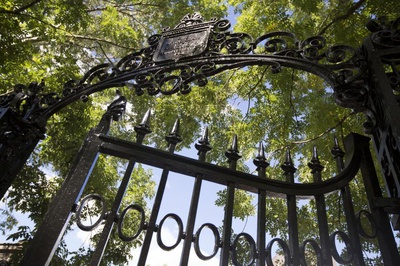
News
News Flash: Memory Shop and Anime Zakka to Open in Harvard Square

News
Harvard Researchers Develop AI-Driven Framework To Study Social Interactions, A Step Forward for Autism Research

News
Harvard Innovation Labs Announces 25 President’s Innovation Challenge Finalists

News
Graduate Student Council To Vote on Meeting Attendance Policy

News
Pop Hits and Politics: At Yardfest, Students Dance to Bedingfield and a Student Band Condemns Trump
We Don’t Need a Survey To Know Harvard Has a Sexual Violence Problem
Breaking news: Harvard still has a sexual violence problem.
On Monday the University announced results from the Higher Education Sexual Misconduct and Awareness survey showing a 10 percentage point decline in the proportion of female students who had experienced unwanted sexual contact.
These putatively positive results are hardly cause for celebration. If anything, they’re reason to redouble our efforts at confronting the epidemic of campus sexual violence.
First, the findings are far from probative. In his email announcing the HESMA results, University President Alan M. Garber ’76 noted that he was encouraged by the fact that Harvard’s response rate was more than 10 percentage points higher than that of the average participating university.
Garber conveniently neglected to mention the figure itself — a mere 35.1 percent. We should all be alarmed that so few of our peers were willing to participate in this important research, and we should exercise extreme caution about drawing conclusions from such a meager sample.
Even if we take the results at face value, they’re cause for distress.
This campus should not play host to sexual violence. The fact that 22 percent of female undergraduates report experiences of unwanted sexual contact is a travesty, not reason to pat ourselves on the back.
Especially when the proportion of Harvard undergraduates who believe campus officials would treat a report of sexual assault “very” or “extremely seriously” has dropped precipitously since 2019 — by 11.6 percentage points among women and 19.7 percentage points among men.
Here’s one thing we don’t need a survey to tell us: Sexual violence is a problem at Harvard. It harms people of every gender, and the University has plenty of room to improve.
That starts with better support for survivors. Even after navigating formal procedures at Harvard or in the legal system, students report inadequate access to or enforcement of remedies like no-contact orders.
Garber’s email announced updates to an “eLearning course” on sexual misconduct. Let’s not kid ourselves — a mandatory online module is not going to solve the problem. A more effective training program would involve requiring in-person discussions in entryway meetings for all years and for large clubs.
Meanwhile, students should be doing more to stand against sexual assault and harassment.
Resources like SHARE and the Office of Gender Equity exist — though we would note that the former’s predecessor may have been better — but they require meaningful student engagement to make real headway.
More fundamentally, we must create a culture hostile to such behavior, regardless of whether it is perpetrated by our classmates, peers, or friends. When we see behavior that approaches sexual misconduct, it is up to students to forcefully call it out. And beyond discussing what is wrong, we must also discuss what is right, offering examples of healthy, positive relationships.
Both the University and the student body can and must do more to combat sexual misconduct. As Garber himself put it, “One instance of sexual assault or sexual harassment is too many.”
This staff editorial solely represents the majority view of The Crimson Editorial Board. It is the product of discussions at regular Editorial Board meetings. In order to ensure the impartiality of our journalism, Crimson editors who choose to opine and vote at these meetings are not involved in the reporting of articles on similar topics.
Have a suggestion, question, or concern for The Crimson Editorial Board? Click here.
Want to keep up with breaking news? Subscribe to our email newsletter.
From Our Advertisers

Over 300+ courses at prestigious colleges and universities in the US and UK are at your disposal.

Where you should have gotten your protein since 1998.

Serve as a proctor for Harvard Summer School (HSS) students, either in the Secondary School Program (SSP), General Program (GP), or Pre-College Program.

With an increasingly competitive Law School admissions process, it's important to understand what makes an applicant stand out.

Welcome to your one-stop gifting destination for men and women—it's like your neighborhood holiday shop, but way cooler.

HUSL seeks to create and empower a community of students who are seeking pathways into the Sports Business Industry.

